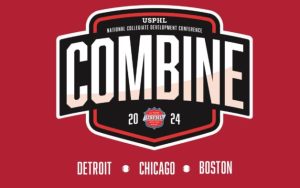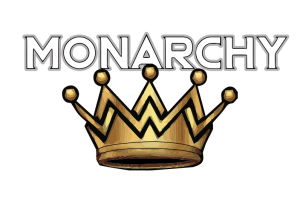Q & A: Jon Gustafson, VP, Sharks Ice

Jon Gustafson wears many hats. As vice president of Sharks Ice, LLC, he oversees Sharks Ice facilities in San Jose, Fremont and Oakland. He also oversees all of the Sharks merchandise operations and serves as vice president of Sharks Minor Holdings LLC, which oversees the business operations for the Worcester Sharks of the American Hockey League (AHL). He took time recently to speak with California Rubber editor Chris Bayee about his myriad of roles and the growth of the game on all levels in the Bay Area.
California Rubber: Many people don’t realize how deep your hockey background is. Could you tell us more about your playing days?
Jon Gustafson: I’m originally from Northern Ontario. I came from a hockey family. My father played goalie at the University of Minnesota-Duluth and my grandfather played minor pro for the New York Americans. He also played in the CFL for one year for the Saskatchewan Rough Riders.
I was fortunate enough to get a D-I hockey scholarship at Colorado College and play four years there where I received a BA in Economics. I had an average college career but I had a good senior year. I ended up playing in the East Coast (Hockey League) in Richmond, Virginia, in the Islanders organization. I had a solid rookie year, and at the end of the year I got called up to the AHL’s St. John’s Maple Leafs, which was the Toronto Maple Leafs’ affiliate at that time. We lost in the seventh game of the Calder Cup Finals. The next year I signed an AHL contract with St. John’s and spent the better part of the next year between there and the East Coast Hockey League.
CR: How did you end up in the Bay Area?
JG: Long story. I ended up playing in the Central Hockey League and that’s when Roller Hockey International came to the forefront (in 1994) in the summer months. I played for a guy named Roy Sommer, who’s now the Worcester Sharks head coach. He needed a goalie for his roller hockey team and kept asking me if I wanted to play. I told him I wasn’t interested. Finally after some convincing I came out to play.
It was one of the best things I ever did because not only did we have a lot of fun, we expanded the game in California. I retired after we won the championship here in San Jose in ’95. I was very fortunate that the owner of the Rhinos, Rich Shillington, asked me to operate the team. I had my business degree and my hockey career was nearing the end. We were successful in San Jose but unfortunately the rest of the league wasn’t. The Sharks bought an ownership part of the team, and that’s where I began working for the Sharks. At that point in time, as luck would have it, the Sharks decided to get in the recreational ice business. Somebody in the organization saw what I did with roller hockey and they offered me a job to run their new entity, which is now Sharks Ice. At that time, Sharks Ice was one facilty with two rinks; we now have three facilities with seven sheets of ice.
The Rhinos’ championship was notable on a couple of levels, including being the first major title won by a San Jose team.
It was the last championship ever won in the Montreal Forum. You didn’t know how many people were going to show up, but I think they had 15,000 people that night, which was capacity. They were doing turnaway business. It was a great game, and we won it in overtime. It was a pretty cool experience for something that was very nontraditional. Looking back, at some point people remember me playing roller hockey but ice hockey was No. 1 on my list.
CR: What do you attribute the growth and success of Sharks Ice to?
JG: First and foremost, the Sharks reputation and successes have attributed to our growth. We have a very encompassing people management plan. It all starts with people. If you can’t do the fundamentals, you certainly can’t do the more intricate pieces of the business. I think we’ve done a good job understanding what our fundamentals are and we carry it out on a daily basis. We have a lot of a great people. We train our people well and we have great retention.
I grew up in an ice rink. It was always clean. My parents knew it was safe. It was a place where the community gathered. Taking the job in San Jose opening up the opportunity for me to transfer my experiences to a non-traditional hockey market. It’s been very successful.
There are so many great people I work with who believe in what we believe in. Candy Goodson, our director of skating, has been there long before me. Same with our director of hockey (Robert Savoie), who started with two teams and now we have the biggest hockey program in the United States. Richard Rocha, who is our director of operations in San Jose, just to name a few, and we have great people in Fremont and Oakland. It’s important all three of our venues operate with the same mission and goals.
CR: It seems as though Sharks Ice never closes.
JG: It’s a great challenge because our buildings are open 365 days a year from 5 in the morning until 2 in the morning. We have over 400 employees. It’s a very interesting and tough business. Profits are not huge but what these facilities bring to a community are priceless. They’re great places for kids to come and dream, for families to recreate, and to integrate into a community. I think there are so many great things these places can offer to a community when run correctly.
CR: Is the Sharks’ model of rink operations the wave of the future?
JG: Absolutely. It’s economies of scale. You can utilize great people to do multiple things and keep them interested and there’s going to be more synergy from place to place. If you can leverage your assets over a greater area, you’ll certainly have a much better opportunity to be successful than not.
CR: How do you manage such a massive adult league?
JG: That’s not an easy thing and or sometimes we take it for granted. We have a great hockey staff who’s been with us for a number of years. Folks in our area recognize that time is very valuable. When you have something that’s competitive in a team environment, coupled with a high level of aerobic exercise, people are going to gravitate toward it, which they do.
The Sharks put a footprint on San Jose when the team arrived. Then you had all these people who gravitated toward the sport. Our mission at Sharks Ice is to offer a cradle-to-grave approach where we offer any and all programming to a customer interested in winter sports. We built our adult league thru class lessons one player at a time. We’re very proud of what we have accomplished.
CR: There has been talk about Sharks Ice expanding in the future. Is there anything in the works?
JG: We’re always looking for opportunities to expand. We’ve certainly explored expansion in San Jose as well as in other markets in the Bay Area and continue to do so. It has to be that right mix for us. We continue to work at it and explore our options.
CR: What does it mean to the Jr. Sharks to be selected a USA Hockey Model Association?
JG: I can’t speak enough about our hockey department and some of their innovative ways and how we got to where we are today. USA Hockey has really taken a look at some of the things we’ve been doing for years. We’ve been doing cross-ice for 10 years, maybe longer. We got out of the Mite travel programs six or seven years ago. We’ve always done separate birth years. While some people have not liked what we’ve done, we’ve stuck to our guns and really focused on development. USA Hockey has identified as being a leader for doing that.







